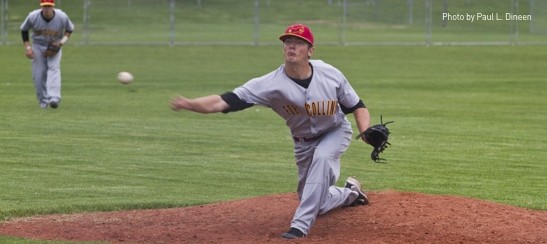Pitching and Functional Fitness
Pitching might be the most volatile athletic movement in sports. Major League Baseball is full of stories about young pitchers halting promising careers under the knife, as mounting surgeries cause players to lose effectiveness.
Yet even before an athlete has a chance to make the pros, many pitchers get injured due to overuse. Especially when club baseball and school baseball has some crossover, young athletes, wanting to compete in both places, over extend themselves, sometimes not even communicating pitching workloads between teams.
Unearthing the Problem
In fact, many believe the problems professional pitchers face on the injury front come from overuse during their teenage years as these players travel around in tournaments and emphasize the fastball. In other words, the issue isn’t necessarily throwing; it’s volume, velocity, and repetition.
Essentially, teenagers are pushing their bodies to the limits trying to impress scouts and outperform their peers, with disastrous results.
Throwing Is a Part of Who We Are
Functionally, however, the human body was made to throw. A pitcher who understands the importance of muscular balance throughout the body and the need for a stable posture will throw within the limits of the body. It might mean a slower velocity in early stages, but you will be able to work into higher velocities with proper technique and a sound functional fitness regimen.
Functional Pitching
So what should a pitcher be considering? Even though each person has a unique functional profile, your training should involve some of these factors.
Balance: The ability of the muscular, neural, and skeletal systems to work in concert to perform tasks in an efficient, controlled manner.
Flexibility: The optimal use of muscles as you produce, adapt and stabilize during movement.
Functional Strength: The ability to gain strength in a way that allows for the best performance of the whole body. This means finding ways of gaining strength in an integrated way, not isolating individual muscles in strength training. This is to prepare for what your sport demands.
Aerobic and Anaerobic Conditioning: It’s all about the efficient intake of oxygen, the optimal use of oxygen throughout the body, and the best cardiac outputs.
Core Stabilization: The core — lumbar spine, pelvis, and hips — needs strength and endurance for functional motion.
Functional fitness, especially when it comes to pitching, needs to be mapped to the unique mechanics of each pitcher. Because of this, it is best to discuss exact parameters with us.
The pitching landscape is full of injuries but it doesn’t need to be. Avoid overuse, steer clear of overthrowing, and map out a functional fitness program to reach optimum performance within your body limits.



